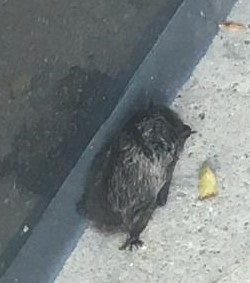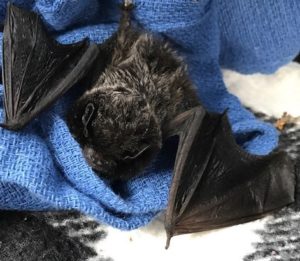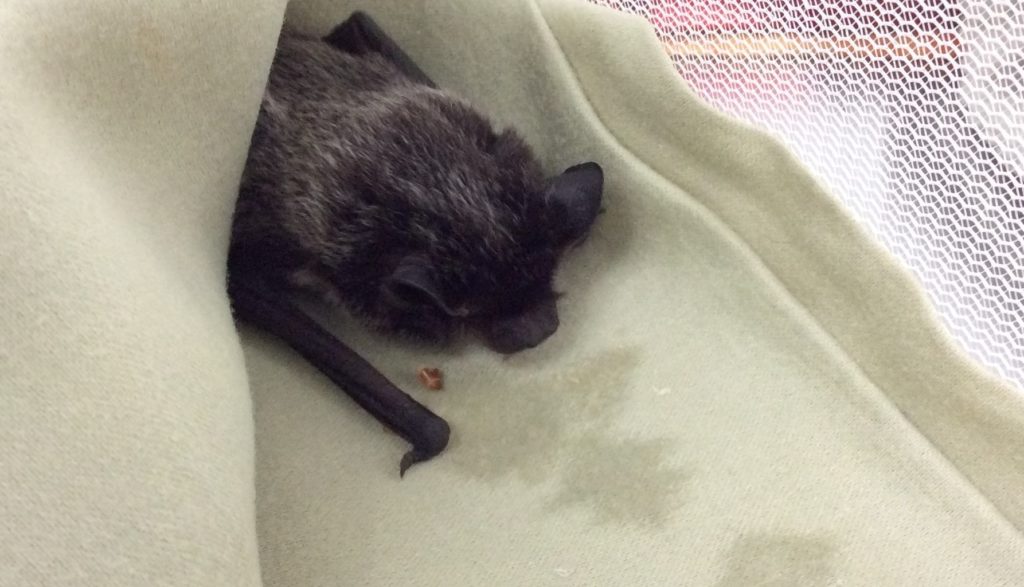
A recent lunch break for a Westerville resident turned into a rescue mission to save a silver-haired bat that had missed its migration window in the fall and managed to survive into central Ohio’s harsh winter.
While walking along Nationwide Boulevard in downtown Columbus on February 1, Jessica Michell spotted a small, gray form on the sidewalk covered partially by snow. At first glance, she said, she thought it might be a mouse. Looking closer, she realized it was a bat, which started to lift its head and shriek at her when she tapped it with her shoe before huddling back up on the curb.
Finding a silver-haired bat alive in the middle of an Ohio winter in an urban center is very unusual, according to Stormy Gibson, assistant executive director of Ohio Wildlife Center. “These bats typically migrate in late August to dry and warm sites where they can hibernate between October and March in trees,” she noted. “They are usually found in forests and favor willow, maple and ash trees.”

Intent on helping the bat she found, Michell initially sought some guidance through Ohio Wildlife Center’s website page that outlines steps to take when you find a bat or other types of mammals (www.ohiowildlifecenter.org/found-an-animal).
“I really didn’t know what to do so I just googled it,” she said. She knew she had to safely transport it to the Wildlife Hospital and protect herself from coming into contact with the bat. “I managed to get it into a small box that was secure without touching the bat and it shrieked the entire drive to the hospital,” she said.
An exam at the Wildlife Hospital determined the bat was dehydrated and underweight, but had no other injuries. After initial care and observation, the bat was placed in homecare until the warmer spring weather arrives so it can be released to return to its summer habitat.

“It is a unique hospital admission for the winter,” Gibson said, “because it is normally a migrant.” The Wildlife Hospital has treated 23 silver-haired bats since 2013. As a Species of Concern and because it is a long-distance migrant, the Ohio Division of Wildlife plans to band the bat before its release, Gibson said.
Silver-haired bats can live up to 12 years and are one of the slowest flying bats in North America. With a wingspan of 10-12 inches, these bats mostly feed in mid-flight on flies, leafhoppers, moths, mosquitoes, beetles, ants and crickets. They are most commonly found in forests near bodies of water and roost under the loose bark of trees.
“These bats do face threats from human activities such as logging because they are a tree roosting species,” Gibson said. “Their populations are decreasing due to habitat destruction, water pollution and deforestation.”
Please consider a gift to help save more bats. Donate here.